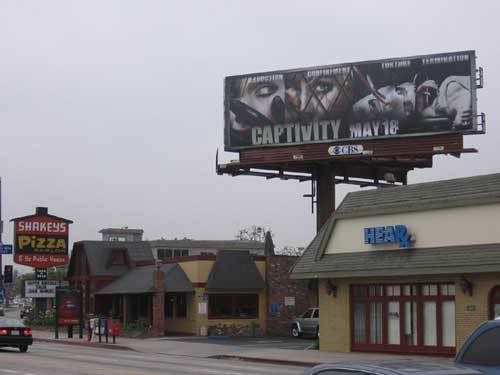In a sudden reversal of fortune, newspapers have taken to online video and might just beat TV news at its own game.

|
Illustration by Ateliér 444 |
W e think we know that the professional news media, especially newspapers, are obsolete, that the future is all about (excuse the expression) you—media created by amateurs. But such PowerPoint distillation tends to overlook the fact that mainstream media are not all simply shriveling and dying but in some instances actually evolving. And in evolution, there are always fascinating transitional iterations along the way. Such as newspapers’ suddenly proliferating forays into online video. (And now magazines: Time Inc. just announced a new “studio” to develop Web video.)
Whereas the YouTube paradigm is amateurs doing interesting things with cameras, the newspapers’ Web videos are professional journalists operating like amateurs in the best old-fashioned sense. One of the Times’s new Web-video stars, David Carr (as the jolly-noir, movie-tasked Carpetbagger), recalls that when the Times’ video operation started fifteen months ago, his bosses said, “ ‘Let’s give it a whirl.’ Which is the exact opposite of the Times’ usual DNA. ‘Let’s give it a whirl’—that’s not something that comes up a lot.”
At their best, the newspapers’ online videos are, minute for minute, superior to TV news. As I write, CNN is airing a live press conference by Anna Nicole Smith’s lawyer and a loop of Smith vamping, while a significant breaking news story—the U.S. claim that Muqtada al-Sadr has left Iraq for Iran—is running in tiny type across the bottom of the screen. Given the dumb-and-dumber choices, I can easily imagine newspapers’ Web-video portals becoming the TV-journalism destinations of choice for smart people—that is, in the 21st century, the dominant nineteenth-century journalistic institution, newspapers, might beat the dominant twentieth-century institution, TV, at the premium part of its own game.
The medium is too new and unsettled to have anything like a best-practices rule book. Everyone is making it up as they go along. And a few of the on-the-fly inventions are awesome. The most attention-getting MSM Web video so far was the very meta one posted last month by the Times about a Washington Post columnist—the slickly produced, thirteen-minute-long “Hi—I’m Art Buchwald and I just died” obituary.
The Times’ and the Post’s strikingly different Web-video paths are illustrative of this flux moment. At the Times, the strategy is to merge operations with the regular newsroom, and convert as many of its journalists as possible to part-time videography. But the Post and washingtonpost.com remain distinct entities—a sore point for some people on the Web side. The Times highlights its several fresh daily videos prominently on the home page; the Post hides them beneath a tiny, generic “Photos & Videos” button.
The quality, of course, is all over the map. An amateur spirit is exciting, but amateurism in action is … not necessarily so. I get no added value from watching A. O. Scott and Ben Brantley deliver abridged versions of their written-for-print reviews. Washingtonpost.com’s extemporaneous version, a nervous editor interviewing wooden film critics, could be a public-access cable clip. Often, the Times reporters’ videos are like tentative, so-so versions of TV-news spots, unremarkable sound bites interlarded with scripted blah-blah boilerplate.
The lessons seem obvious: Don’t do Web video if you don’t have anything interesting to show, and don’t compete with TV unless you can do something they can’t or won’t. In other words, use the medium.
The Times’ fashion-show coverage worked well because hearing and watching designers gives one instant tastes of the various flavors of gay Seventh Avenue affect, which Times prose won’t convey. On the op-ed page, I mostly skip Nicholas Kristof’s columns about sexual slaves in Asia and genocide in Darfur; watching his video pieces shot in Cambodia and Sudan, I was riveted. Online video can also exploit the “long tail” in ways TV can’t. There may not be many of us who want to watch a hep Romanian mayor justify prejudice against Gypsies (the Post), or Sarah Vowell’s illustrated ode to the architect Louis Sullivan (the Times), but I adored both. If documentaries are hard to get shown in theaters and on TV, imagine the obstacles faced by serious shorts. But now, in the online archives of U.S. papers are thousands of videos, among them dozens of exceptional short docs, more like miniature Frontlines or public-radio-with-pictures than like network-news segments, available anytime. This is video-journalism-on-demand years ahead of digital television: Because I elect to watch a story, then see it on a computer screen eighteen inches from my face, I focus in a way TV doesn’t require.
At the Times, with its more TV-esque model (the video unit morphed out of Times Television), on-camera talent is king. Among the best is technology columnist David Pogue. He cheerfully performs: In a piece on the Apple iPhone, he’s frank about his excitement, and uses the medium well to demonstrate how to zoom in on pictures by physically pinching them. “There are people in this building,” Carr says, “that are really good at video and others who aren’t. Is it just the hambone gene












